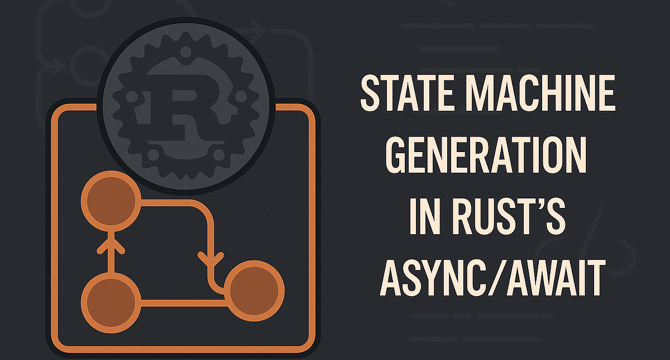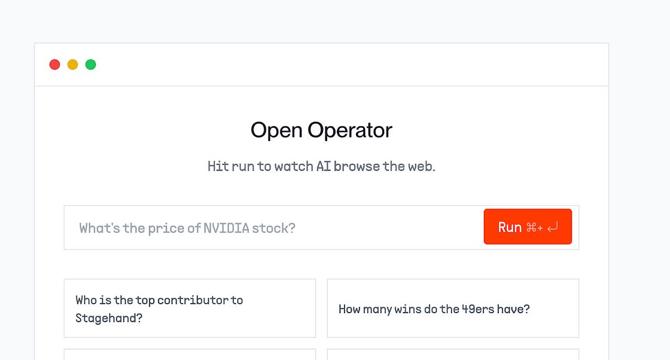Programming News
Dev
86

Image Credit: Dev
How to Filter ComboBox Items Based on Another ComboBox Selection in JavaScript?
- Filtering the content of a ComboBox based on another ComboBox's selected value can be a common requirement in SAP UI5 applications, providing a dynamic selection experience for users.
- Issues related to control hierarchy and scope can arise when attempting to filter ComboBox items in a data-bound list structure, requiring careful management of control IDs.
- To filter ComboBox items effectively, access the correct parent control, ensure the binding patterns are set up correctly, attach event handlers appropriately, and use debugging strategies if needed.
- By following the step-by-step solution provided, you can enhance user experience by dynamically filtering ComboBox items based on another ComboBox's selection, creating a smoother UI experience.
Read Full Article
5 Likes
Logrocket
359

Image Credit: Logrocket
Building multi-region infrastructure with AWS
- The article discusses building a multi-region web application using AWS to reduce latency and increase reliability by distributing resources closer to users.
- It starts with hosting the frontend on AWS S3, creating separate buckets for different regions like us-east-1 and eu-central-1.
- The frontend is served using CloudFront, AWS's CDN service, which caches content and improves load times for users.
- Route 53 is used for DNS configuration and geolocation routing to direct users to the correct CloudFront distribution based on their location.
- For the backend, AWS Lambda with API Gateway is employed, allowing serverless execution of code in response to API calls.
- Lambda functions are region-specific and need to be duplicated to support a multi-region architecture.
- API Gateway is used to create REST APIs with region-specific URLs and API Keys for security and control of usage.
- The article suggests using Cloud Development Kit (CDK) to automate infrastructure deployment and management, making processes more efficient.
- By combining S3, CloudFront, Route 53, Lambda, and API Gateway, businesses can serve content closer to users, improve performance, and ensure high availability.
- Multi-region setups are crucial for global businesses, and automation with CDK can help scale and maintain complex infrastructures effectively.
Read Full Article
21 Likes
RealPython
399

Image Credit: RealPython
Working With Missing Data in Polars
- Efficiently handling missing data in Polars is crucial for maintaining clean datasets during analysis.
- Polars offers tools to identify, replace, and eliminate null values, ensuring smooth data processing.
- The video course demonstrates practical methods for managing missing data and showcases Polars' features to optimize data analysis workflows.
- Key takeaways include using LazyFrames and DataFrames in Polars, checking for null values with .null_count(), handling NaN and null representations, replacing NaN with nulls using .fill_null(), and addressing missing data through identification, replacement, or removal of null values.
Read Full Article
24 Likes
Johndcook
422

Decimal Separator and Internationalization
- When reporting numbers, it is suggested not to use three digits after the decimal point to avoid confusion with the thousands separator.
- In software development, it is recommended to use libraries to handle numeric input and output according to local conventions to prevent errors.
- An incident in 2006 during a course on Bayesian clinical trial design in Bordeaux highlighted the issue of decimal separator differences between the US and France causing software problems.
- The solution in the mentioned incident was for attendees to set their operating system locale to the US to overcome the issue of conflicting decimal notation formats.
Read Full Article
25 Likes
Discover more
- Software News
- Web Design
- Devops News
- Open Source News
- Databases
- Cloud News
- Product Management News
- Operating Systems News
- Agile Methodology News
- Computer Engineering
- Startup News
- Cryptocurrency News
- Technology News
- Blockchain News
- Data Science News
- AR News
- Apple News
- Cyber Security News
- Leadership News
- Gaming News
- Automobiles News
Medium
409

Image Credit: Medium
State Machine Generation in Rust’s async/await
- Rust's async/await feature is a significant addition offering a synchronous-looking syntax for writing efficient asynchronous code.
- Understanding how the Rust compiler transforms async functions into state machines can help in writing efficient async code and debugging complex issues.
- State machines play a crucial role in Rust's async operations, and this article explores the transformation process with practical examples and performance implications.
- A state machine is a computational model foundational in async operations like Rust, defining states and transitions for effective code execution.
Read Full Article
24 Likes
Medium
363

Why Java Still Forces You to Write Functions Inside a Class — and What That Says About Its Broken…
- Java was designed for corporations and control, not individual developers, leading to the requirement of writing functions inside a class since 1995.
- The necessity of placing every utility function within a class in Java is based on the 'everything is an object' philosophy of OOP, which has become outdated with the evolution of UIs, APIs, microservices, and mobile apps.
- Kotlin introduced top-level functions, null safety, extension functions, and coroutines, providing more flexibility and modern features that Java lacks.
- Java's reluctance to adapt and evolve restricts developers and prevents the language from keeping up with the changing demands of software development.
Read Full Article
21 Likes
Dev
399

Image Credit: Dev
How Async/Await Evolved from Generator-Based Coroutines
- Python's async journey evolved from using generators as a fundamental feature before async/await made asynchronous programming smoother.
- Generators were key in introducing the concept of pausing functions with yield, allowing lazy computation and two-way interactions.
- Building on generators, coroutines emerged, enabling functions to pause, wait for input, and resume, leading to scenarios like chatbot interactions.
- Event loops came into play for managing multiple coroutines automatically, initially using generator-based coroutines before getting complex with yields.
- Python 3.3 introduced yield from to chain generators and compose coroutines, improving the readability and composition of event loop code.
- Python 3.4 brought asyncio, offering an official event loop and @asyncio.coroutine decorator, setting the stage for async/await syntax in Python 3.5.
- Python 3.5 introduced async and await keywords, making coroutine functions clearer and more intuitive, simplifying async operation handling.
- Despite using async/await syntax, Python still leverages generator machinery, with coroutine objects acting as paused functions for tools like asyncio.
- The evolution from generators to async/await showcases Python's incremental improvements and thoughtful steps in enhancing language features.
- Understanding this journey aids in appreciating and debugging async code, emphasizing the significance of earlier concepts like yield.
Read Full Article
24 Likes
Medium
99

Image Credit: Medium
Simple Library HTTP REST API App in Go
- Blog post detailing the creation of a simple HTTP REST API application in Go with Gin as the HTTP framework.
- The application is designed to manage books in a library, offering functionalities for create, read, update, and delete operations.
- Testing for this application is primarily conducted using unit testing with the libraries testify and testify/mock.
- The application structure includes components like entity, repository, service, handler, and main with endpoints for various CRUD operations on books.
Read Full Article
6 Likes
Medium
82
Image Credit: Medium
How To Rewrite Class Components to Functional Components in React
- In class components, state is declared and updated using this.state and this.setState. In functional components, state can be managed using the useState hook.
- Class components use lifecycle methods like componentDidMount and componentWillUnmount for side effects. The equivalent in functional components is useEffect hook.
- In class components, methods are often bound to 'this' or class fields, whereas in functional components, functions are defined within the component scope, eliminating the need for binding.
- Functional components receive props as function arguments, while class components access props through this.props.
Read Full Article
4 Likes
Medium
399

How I build and launch apps with AI, fast.
- When building and launching apps with AI, focus on documentation like PRD, UX, MVP Concept, Test Plan, and v0.dev Design.
- Consider using no-code options if coding basics are unknown, but with a computer science degree, venturing into coding might be less risky.
- Choose a technical stack based on your product needs and familiarize yourself with key aspects like javascript for frameworks or SQL for databases.
- Whether coding or using no-code solutions, leverage tools like Cursor for assistance, but be cautious of LLM knowledge cutoffs and review AI-generated code.
Read Full Article
24 Likes
Technically Dev
87

Image Credit: Technically Dev
How can AI use websites?
- AI models use web browsers to navigate the internet, but browsing the web is complex due to the non-deterministic nature of websites.
- Browserbase develops software for AI models to browse the web effectively, overcoming challenges like website changes and security concerns.
- Tools like Selenium work well for specific sites but are not suitable as a base layer for AI models needing to browse any site.
- Browserbase focuses on creating a headless browser tailored for AI models, eliminating unnecessary graphic elements and providing control through automation frameworks.
- Open Operator, a browser for AI models, was introduced by Browserbase as an open-source alternative to proprietary solutions like Operator from OpenAI.
- Open Operator is powered by Vercel and allows users to browse the web using AI, with the ability to switch between different AI models conveniently.
- Using Vercel's AI SDK, Browserbase developed Open Operator swiftly and efficiently, leveraging tools like v0 for UI design.
- The Browserbase team utilized Vercel's infrastructure for hosting Open Operator, ensuring smooth functionality and proper security measures.
- Positive reception for Open Operator has been noted, with GitHub stars and mentions on platforms like YouTube, showcasing its success without extensive marketing efforts.
- The development process of Open Operator demonstrates the collaboration between AI technology and web infrastructure to enhance browsing capabilities for AI models.
Read Full Article
5 Likes
Logrocket
181

Image Credit: Logrocket
PM mentorship: The missing skill in product leadership
- Developing other PMs is a crucial skill for product leaders and mentorship plays a key role in this aspect.
- Mentorship in product management is distinct from coaching or leadership, offering comfort and unbiased feedback.
- PM mentorship contributes to skill enhancement by facilitating confidence-building and problem-solving abilities.
- Soft skills like roadmap optimization, prioritization techniques, and customer insights are popular topics for mentorship.
- Establishing trust, maintaining confidentiality, and setting clear agendas are vital for effective mentorship sessions.
- Different models like one-session mentoring and ongoing mentorship help address varied technical and skill development needs.
- Structured mentorship programs aid in identifying mentees' needs, enhancing engagement, and guiding individual growth.
- Choosing appropriate leadership styles based on mentees' competence and commitment levels is crucial in mentorship.
- Building a PM mentorship network fosters peer support, knowledge sharing, and better team collaboration.
- Mentorship bridges the gap between theory and practice, providing valuable insights, enhancing decision-making, and nurturing empathy in product leadership.
Read Full Article
10 Likes
Medium
249

Image Credit: Medium
When ChatGPT Meets Copilot: From Painter to Artist
- AI tools are changing the role of developers, shifting focus towards conceptualization and design aspects of coding.
- There is a distinction between coding tools and reasoning models, but the potential of a seamless integration creating coherent code is explored.
- The idea is not automation but co-creation, where developers become conductors of intent in collaboration with AI tools.
- The shift is towards developing apps from a single prompt while maintaining clear internal logic and scalability in production contexts.
Read Full Article
13 Likes
Dev
104

Image Credit: Dev
DSA Day 1: Introduction to Arrays – "The Building Block of Programming"
- An array is a collection of elements stored at contiguous memory locations, each identified by an index or key, allowing efficient access.
- Key characteristics include fixed size, homogeneous elements, contiguous memory, zero-based indexing, and random access.
- Basic array operations include accessing elements in O(1) time, insertion and deletion complexities, traversal, and searching techniques.
- Dynamic arrays like ArrayList in Java and List in Python overcome fixed-size limitations, and common array algorithms include two-pointer technique, sliding window, prefix sums, Kadane's algorithm, and Dutch National Flag Algorithm.
Read Full Article
6 Likes
Medium
204
Image Credit: Medium
Go Just Outshined Python for This One Reason
- In the world of programming, developers compare languages to find the best tool for their projects.
- Python is known for its simplicity and versatility, while Go (Golang) is gaining traction for performance and concurrency.
- Go outshines Python in concurrency and scalability for high-performance systems due to its design and concurrency model.
- The article emphasizes Go's strengths in concurrency, making it a compelling choice for certain applications, while acknowledging Python's advantages.
Read Full Article
12 Likes
For uninterrupted reading, download the app